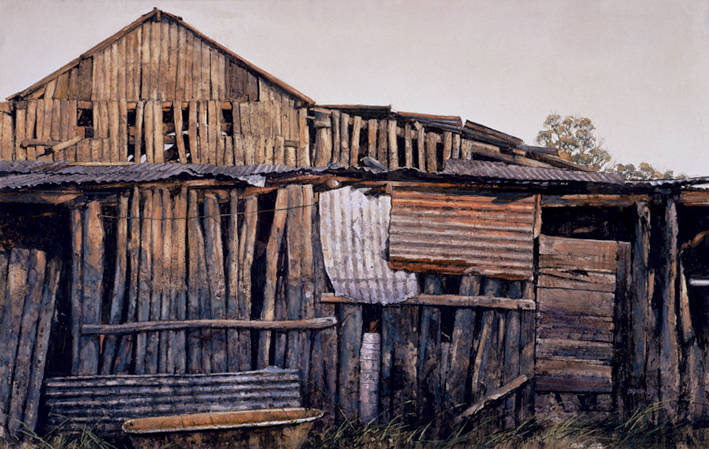
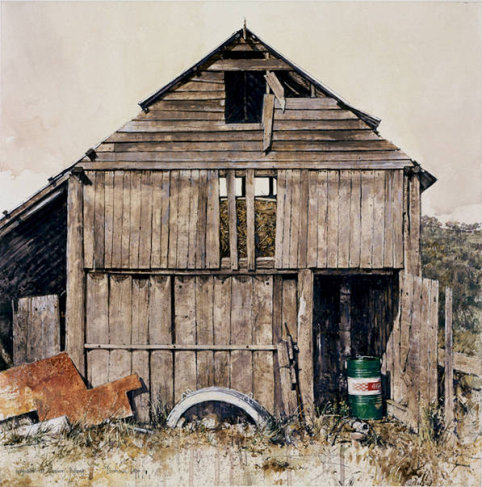

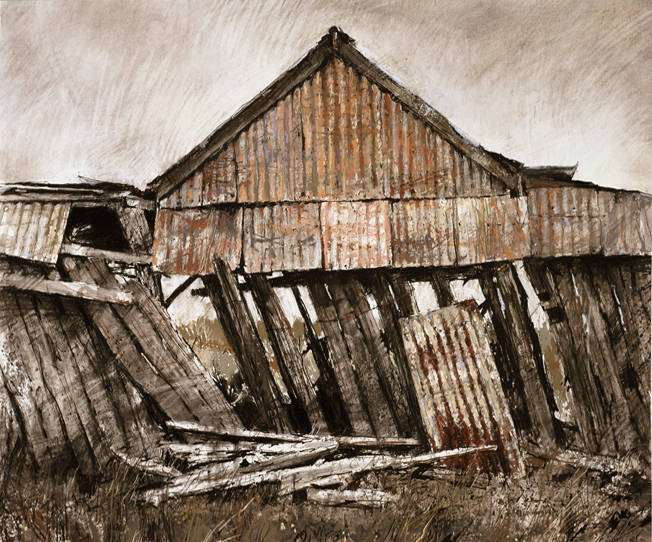
Four works by Graham Lupp: Cow Flat Shearing Shed; Hayshed, ‘Tryalion’, Bylong; Al‘s shed after repairs; and Machinery Shed. [Click on thumbnails for larger images and additional information.]
In the context of Victorian culture the Australian woolshed or shearing shed may appear architecturally insignificant. Now frequently derelict, these strictly utilitarian structures, devoid of the usual hallmarks of the Gothic and Classical revivalist, are never-the-less a direct and telling expression of the harshness of rural life in nineteenth-century Australia.
Until 1850 when corrugated, or galvanised, iron was first imported from Britain, the Australian woolshed, much like the American log cabin, showed an ingenious use of available materials. Local timbers, usually eucalyptus, were simply split lengthways to form what were called slabs. Because nails were in short supply, these slabs were chamfered with an axe or adze at each end and slotted into top and bottom plates supported between simple round posts. The urgent need to provide basic shelter saw little consideration given to protection from moisture, white ants or vermin. In the very early days, floors were dirt and roofs were of simple round timbers clad with split shingles.


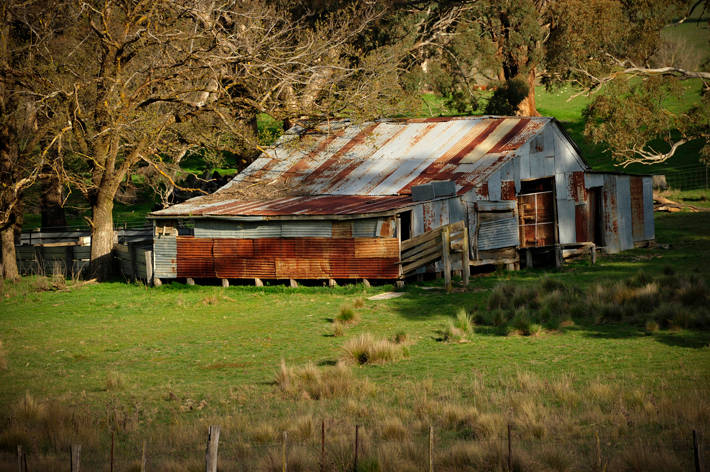
Left to right: Shearing Shed, "Clear Creek"; Haysheds at the Lagoon; and Woolshed, Buckburraga Creek. [Click on thumbnails for larger images and additional information.]
For the average settler timber used in this way formed the easiest and most affordable means of construction - particularly for outbuildings such as stables, dairies and machinery sheds and the classic woolshed with its marshalling yards. Where means allowed, farmhouses were often weatherboard clad or in basic brick. Only the wealthier landowners built the ‘Villa Residence’, a recognisably Victorian stone and brick edifice, complete with all the decorative grandeur of the period.
With the explosion of population caused by the 1851 gold rush at Bathurst and in Victoria at Bendigo and Ballarat, came a even greater need for cheap and speedy construction. After 1850 corrugated iron was ubiquitous and by the 1880’s, a period of immense prosperity and growth, Australia had become Britain’s biggest importer of this ingenious Victorian material.



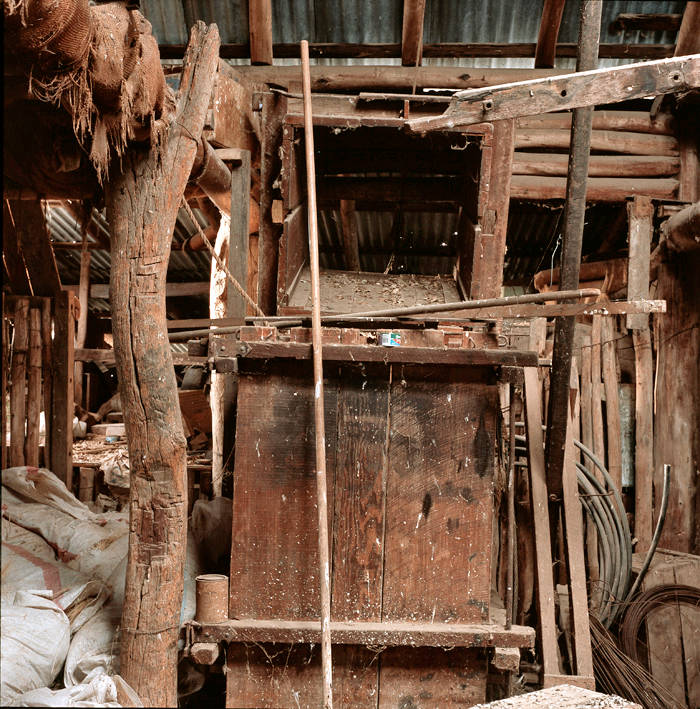
Left to right: Woolshed at Old Errowanbang; Interior, Woolshed at Old Errowanbang; Shearing with mechanical clippers; and Garthowen shed interior. [Click on thumbnails for larger images and additional information.]
Rural architecture changed forever and extensions or renovations were inevitably done in iron. This mixture of aesthetics, from slab to iron, allows for the easy dating of sheds and the combination of materials, often along adjoining surfaces, created an appeal beloved of artists and photographers. Corrugated iron, as it ages and is replaced, exhibits a rusting patina of almost endless variation.
Over the last two or three decades however, the centralisation of rural management particularly with the shearing of sheep has seen these unique features of the landscape slowly fall into neglect. This decline has been hastened by the introduction of strict occupational health and safety laws resulting in the gradual abandoning of small sheds.



Left to right: Freemantle Woolshed; Interior, Freemantle Woolshed; and Interior, Freemantle Woolshed. [Click on thumbnails for larger images and additional information.]
Except for more viable woolsheds, such as the impressive, heritage listed shed still in use at Old Errowanbang, 70 kilometres south of Bathurst, smaller sheds will inevitably disappear. Many of those shown here have been demolished or have become so unsafe and snake infested as to be avoided. When not used for storing hay the sheds are seen as a ready source of well-seasoned firewood.

Ryannah Shearing Shed. [Click on thumbnail for larger image and additional information.]
This modest survey, which has been restricted to the central tablelands of NSW, is in no way comprehensive. Hundreds of the more primitive slab woolsheds still exist in the eastern states of Australia, especially along coastal regions which were settled first.
Bibliography
Cox, Philip and Freeland, John. Rude Timber Buildings in Australia. London: Thames and Hudson, 1969.
Freeman, Peter Geoffrey. The Woolshed: A Riverina Anthology. Melbourne: Oxford University Press. 1980.
Sowden, Harry. Australian Woolsheds. Cassell Australia Ltd. 1973.
Last modified 31 October 2023
